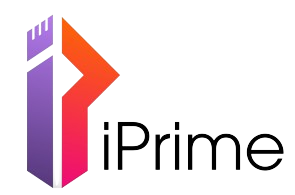Empowering Inclusion: Over 80% Staff Achieve Working Knowledge of Hindi under the Rights of Persons with Disabilities Act
In a significant step towards promoting linguistic inclusivity and accessibility, the Ministry of Social Justice and Empowerment has announced that more than 80% of staff have acquired working knowledge of Hindi. This achievement aligns with Rule 10(4) of the Official Language (Use for Official Purposes of the Union) Rules, 1976, as amended in subsequent years (1987, 2007, and 2011). The notification, issued under S.O. 3123(E)(07/24/2024), highlights the government’s commitment to linguistic inclusion, particularly under the framework of the Rights of Persons with Disabilities Act.
This development serves as a pivotal moment in bridging language barriers, fostering better communication, and ensuring accessibility for a wider audience.
Understanding Rule 10(4) and Its Relevance
- Improving Accessibility:
Ensuring that Hindi, one of India’s most widely spoken languages, is adequately represented in official communications. - Fostering Inclusivity:
Strengthening communication channels with Hindi-speaking citizens, including those with disabilities, and enhancing their access to services and information.
Linking Hindi Proficiency with the Rights of Persons with Disabilities
The Rights of Persons with Disabilities Act, 2016, emphasizes equitable access to services, information, and communication for individuals with disabilities. Language plays a crucial role in achieving these objectives, particularly for people who rely on accessible formats or assistive technologies that support Hindi.
This notification aligns with the Act’s broader goals by:
- Enhancing Information Accessibility:
Staff with working knowledge of Hindi can communicate effectively with citizens, making essential services more accessible to diverse populations. - Reducing Barriers:
By adopting a language familiar to a significant portion of the population, the initiative minimizes linguistic barriers and fosters inclusion.
Impact of the Notification
- For Government Operations:
The increased use of Hindi in official communications will streamline processes and make information more accessible to Hindi-speaking stakeholders, including individuals with disabilities. - For Citizens:
Hindi proficiency among staff ensures that Hindi-speaking citizens, including those with disabilities, can access government services and information without language barriers. - For Staff Development:
Encouraging working knowledge of Hindi among employees builds a linguistically versatile workforce and enhances the overall efficiency of government operations.
A Step Towards National Integration
Promoting Hindi proficiency among government staff also strengthens the spirit of national integration. With Hindi being one of the most spoken languages in India, this initiative ensures that official communications resonate with a broader demographic, contributing to greater inclusivity and unity.
The Road Ahead
While achieving over 80% Hindi proficiency among staff is commendable, continued efforts are necessary to:
- Train Remaining Staff:
Ensure the remaining workforce achieves working knowledge of Hindi. - Develop Accessible Formats:
Complement linguistic inclusivity with accessible formats like Braille, audio, and digital technologies for persons with disabilities. - Expand Language Inclusivity:
Promote similar initiatives for other regional languages to cater to non-Hindi-speaking populations.
Conclusion
The Ministry of Social Justice and Empowerment’s achievement of 80% staff proficiency in Hindi marks a significant stride towards inclusivity and accessibility. This milestone, linked to Rule 10(4) of the Official Language Rules and the Rights of Persons with Disabilities Act, reflects the government’s commitment to fostering equitable communication and breaking down linguistic barriers.
By bridging the language gap, the government sets an example for creating a more inclusive society where every individual, regardless of their language proficiency or disability, can access essential services and opportunities seamlessly.






